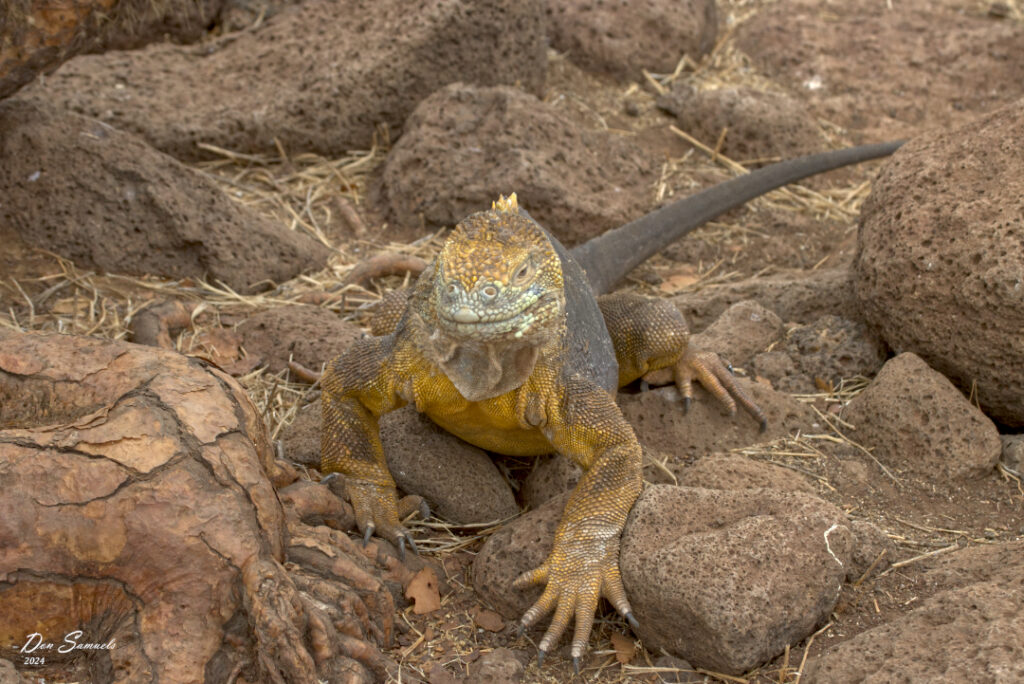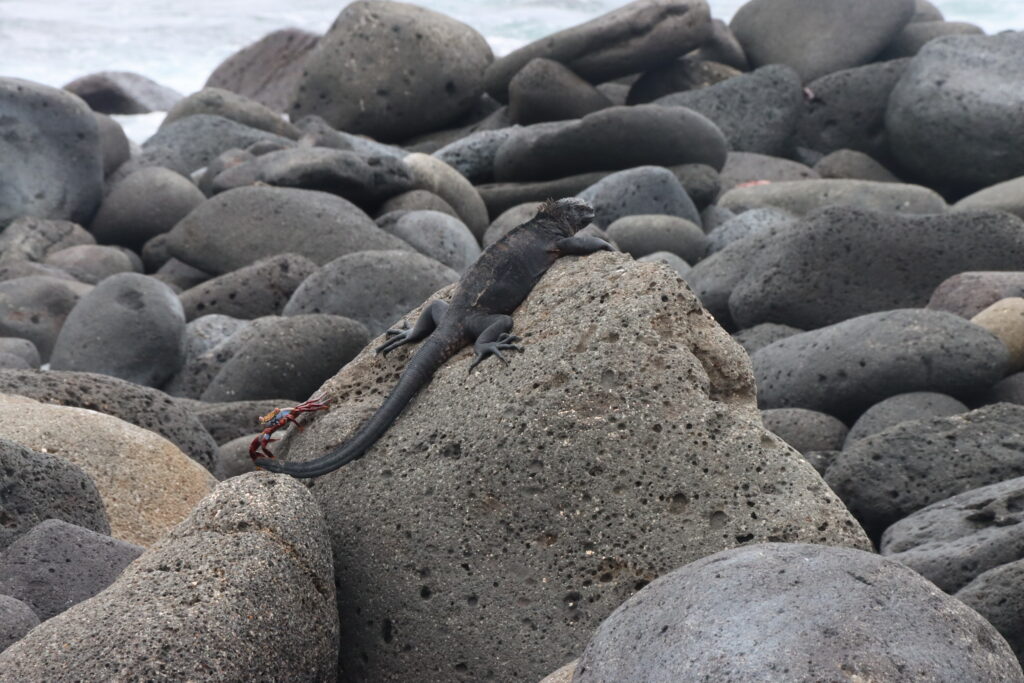North Seymour Island
Just after breakfast on our first full day took us back a little bit North from the previous stop to North Seymour Island. This is a mere fly-speck on the map (its actually under the 2a on the map photo). This was a dry landing, so we did not have to juggle a shoe change before the hike. By the way, “dry landing” means it is dry unless you fall in off the rocks, but no one did that on our trip. Sure looked possible though. We hiked a loop trail of a bit over a mile in the morning and saw birds, sea lions and iguanas (both marine and land).
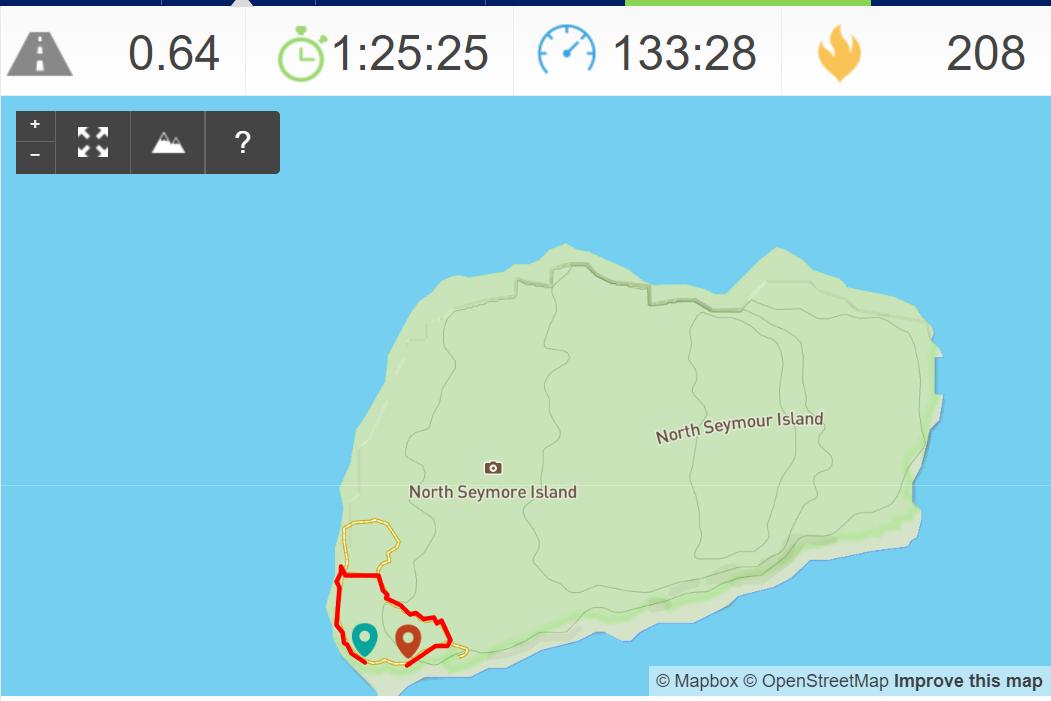
North Seymour gave us our best view of frigate birds, yes, the same birds we saw floating overhead in Florida. These are unusual for sea bird species in that they cannot land on water because they lack waterproofing in their feathers. So how did these birds get to the Galapagos Islands which are more than 600 miles off shore. Here is a report of an interesting study.
There are two species of frigate bird found in the Galapagos: Magnificent Frigate Birds and Greater Frigate Birds. In both species, the males have a red throat sack which they inflate as part of a mating ritual. This picture shows a pair of greater frigate birds sitting on a nest, the male with his throat sack inflated. On the right is a rejected suitor, perhaps hoping the female will change her mind. You can tell these are greater frigate birds by the red eye ring on the female, and also by the greenish cast to the feathers on the back of the rejected male.
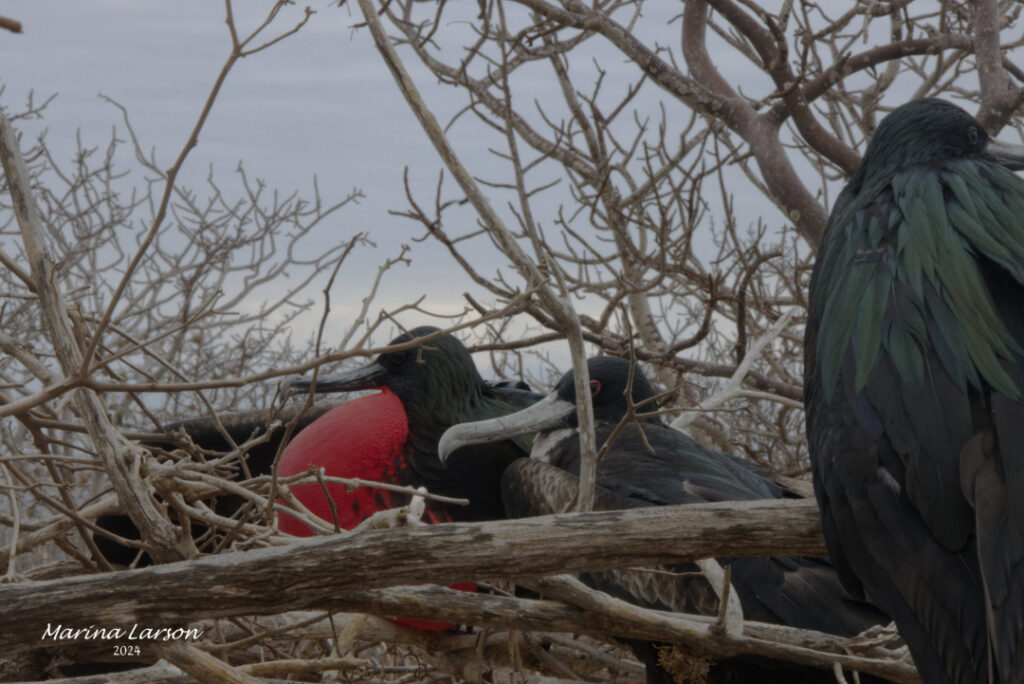
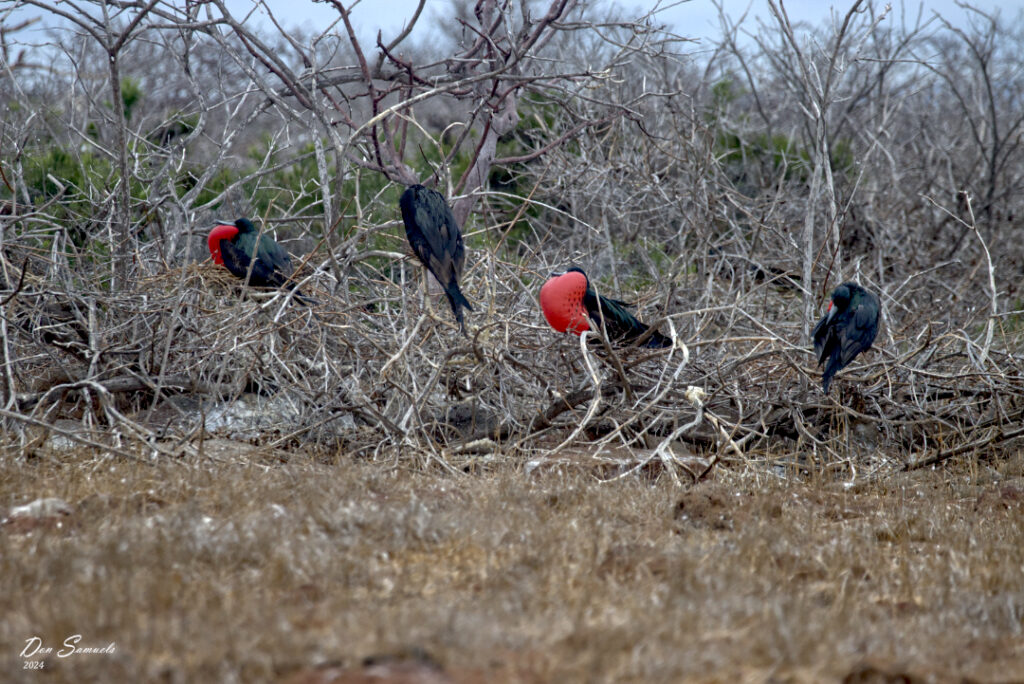
Juvenile frigate birds have distinctive white heads, but they are still large birds. This coloration lasts for a number of years, and breeding starts sometime thereafter.
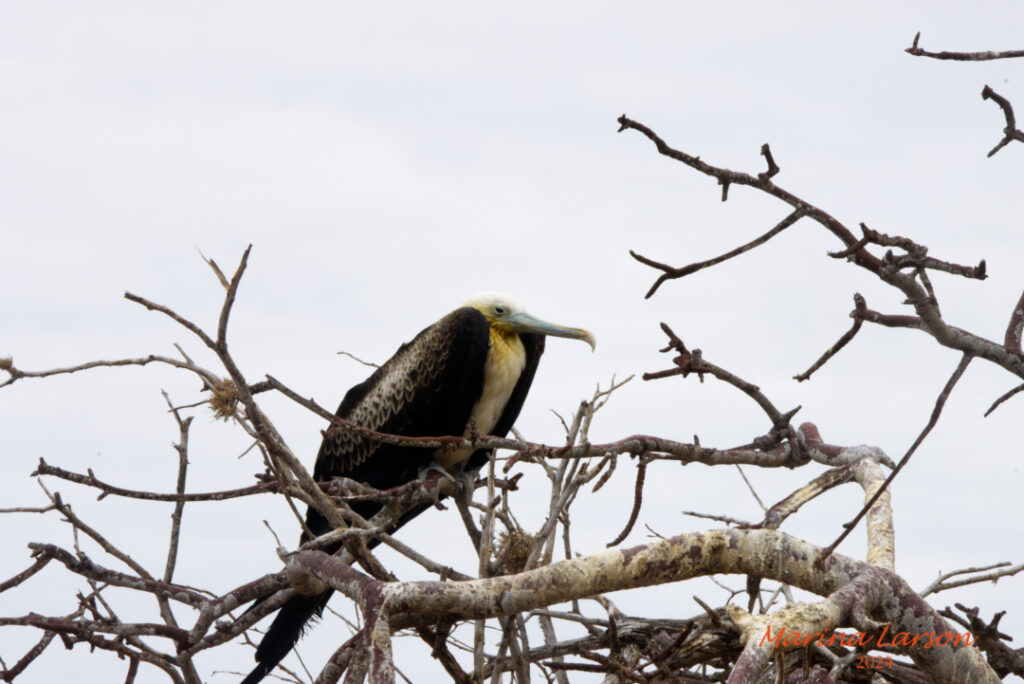
We also saw our first blue-footed boobies on North Seymour. The blue color in the feet and bill develops with age, apparently due to the fish they eat. The juveniles are fluffy and have white feet.
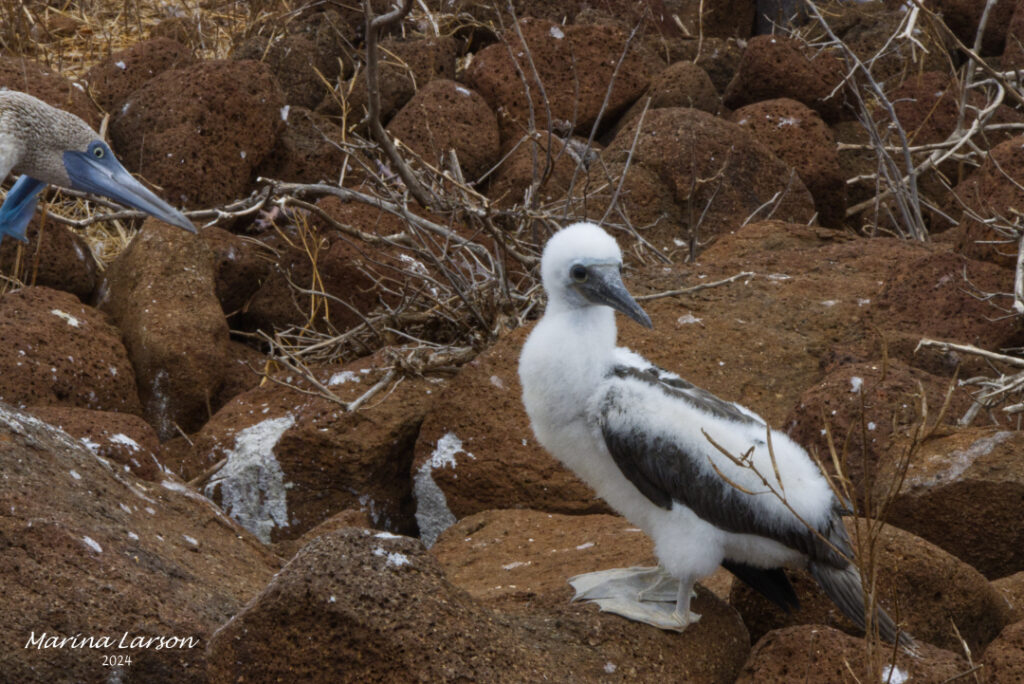
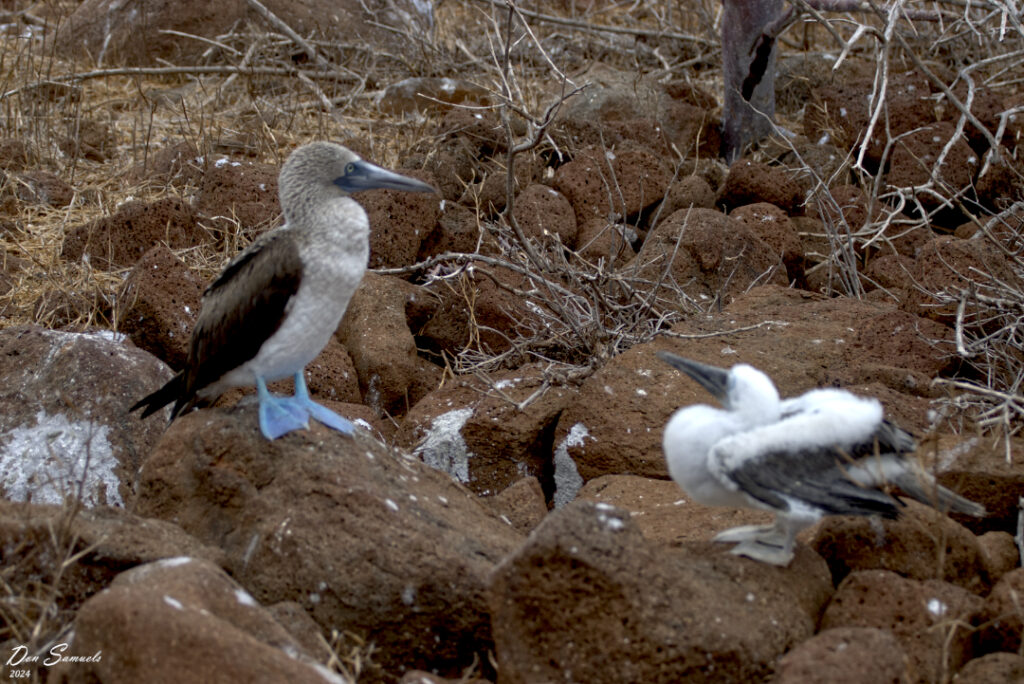
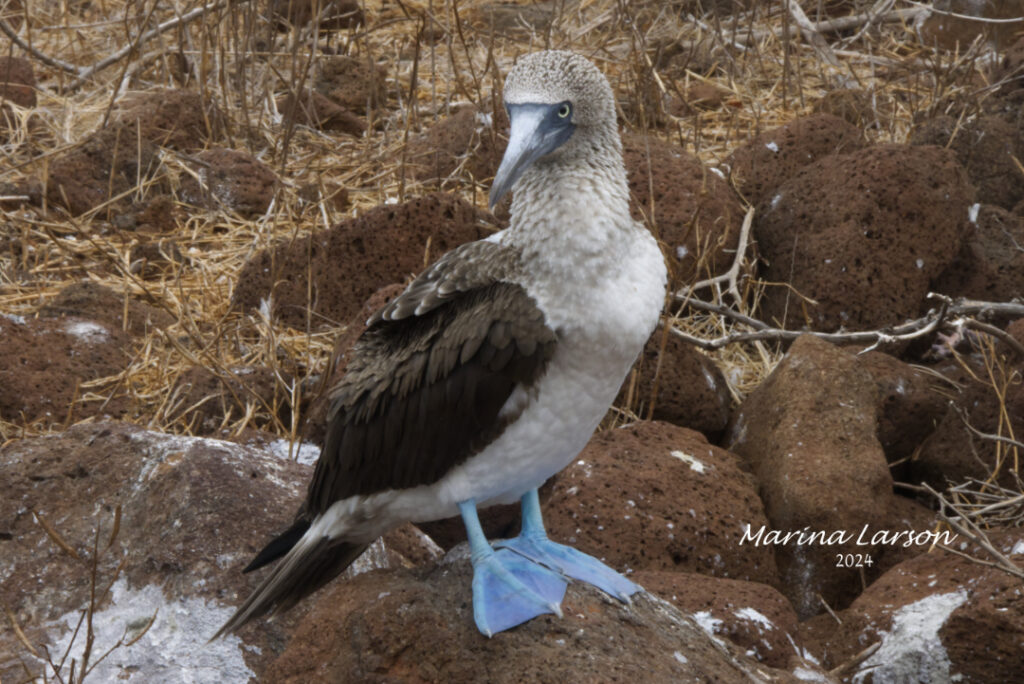
Sea lions are plentiful in the Galapagos, and remain utterly unconcerned about humans and seem to enjoy posing.
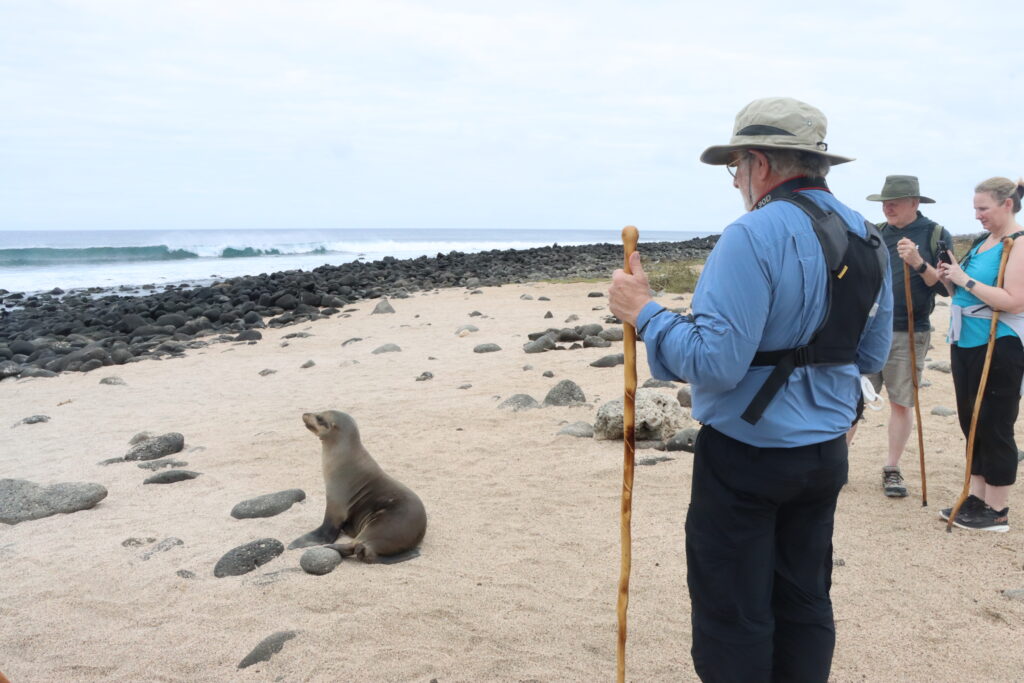
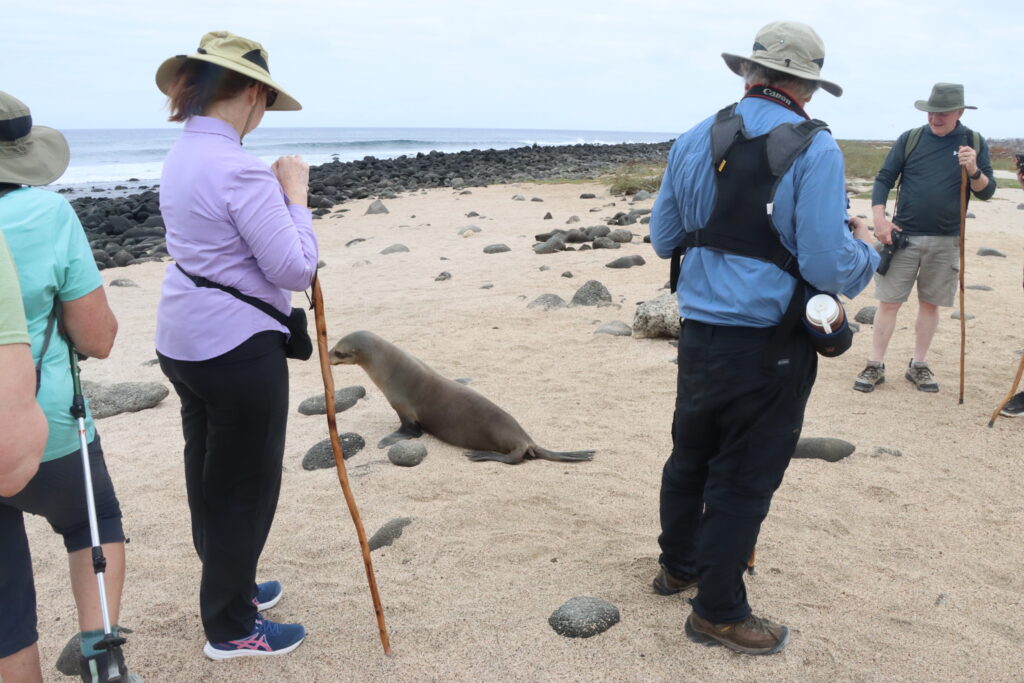
Sea lions have four mammary glands, although only one is in use in this picture.
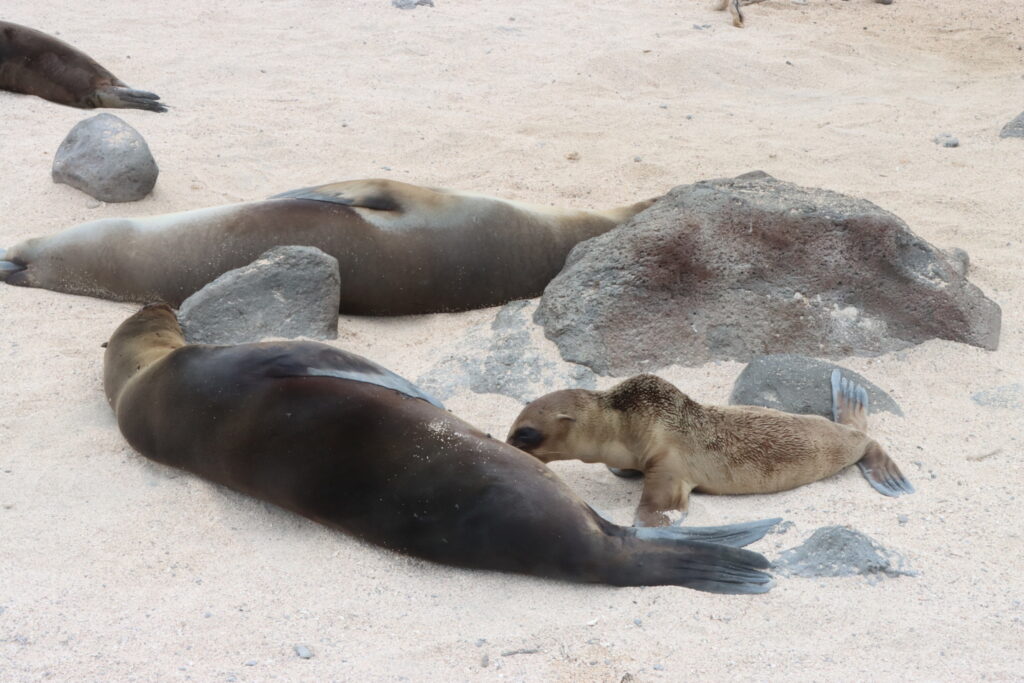
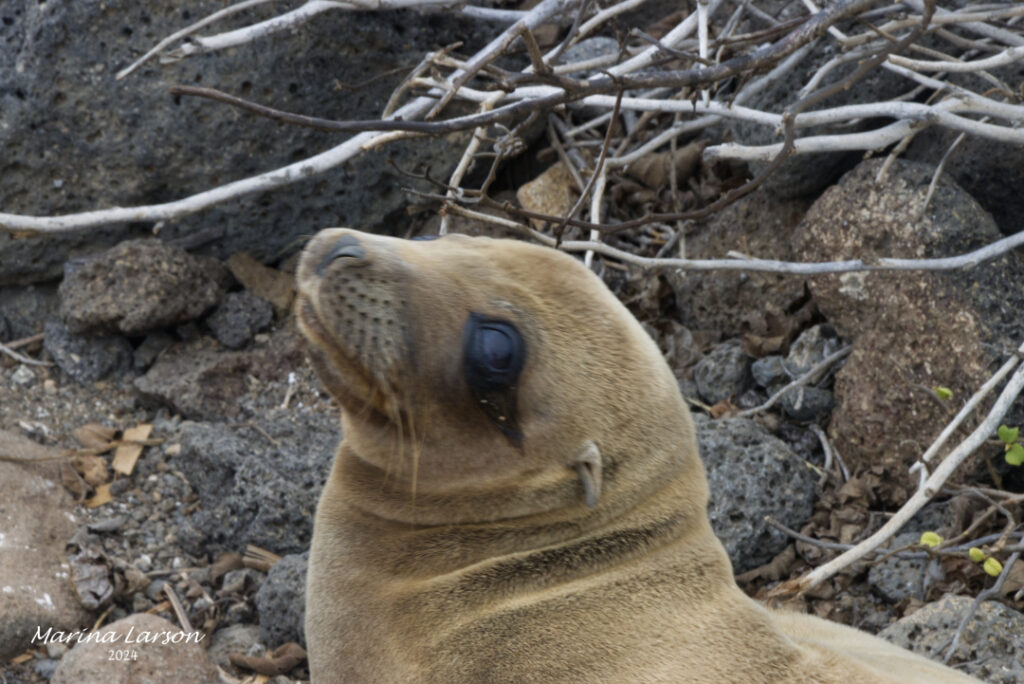
We also saw both marine and land Iguanas on North Seymour.
